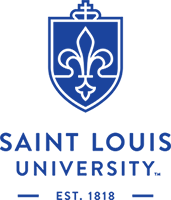Newswise — This year, Saint Louis University medical researchers advanced their fields, contributing to human knowledge and bringing hope to those in pain and sickness.
Publishing their findings in some of the world’s most prestigious medical journals, including the New England Journal of Medicine, the Journal of the American Medical Association, The Lancet and Proceedings of the National Academy of Sciences, SLU’s faculty moved medicine forward in significant ways.
Medical research can be a frustratingly slow process, often taking decades to see a success in a Petri dish lead to a cure for a patient. Many of the researchers who had breakthroughs this year have been working on their ideas for years, and, with the culmination of countless hours of work, finally saw their patience pay off.
The tireless work of our medical researchers and their teams, as well as all who work to support them and make their discoveries possible, means that contributions made in laboratories in St. Louis will someday heal people around the globe.
From among many, many experiments, grants, papers, conferences, failures and successes that take us steps closer toward cures, treatment and prevention, a few highlights:
Stopping Suffering Daniela Salvemini, Ph.D., has dedicated her career to understanding pain and finding ways to alleviate it. This year, she made a major breakthrough, finding an “off switch” for pain. This laboratory research offers a new avenue for drug developers to create powerful pain killers that aren’t addictive and do not carry debilitating side effects. http://www.slu.edu/x98903.xml
Halting Liver Disease SLU’s Liver Center has long been recognized as one of the most outstanding research and treatment centers in the world. This year, Brent Neuschwander-Tetri, M.D., who led the NIH-funded FLINT trial and published the findings in The Lancet, found the first potential treatment for fatty liver disease, an illness that has grown in tandem with the country’s obesity epidemic and which is now the third most common reason for liver transplantation. http://www.slu.edu/x98905.xml
And, Bruce Bacon, M.D., and Adrian Di Bisceglie, M.D., continued their work conducting clinical trials to study treatments for hepatitis C. Most recently, Di Bisceglie published research in the New England Journal of Medicine, about a daily pill taken for eight weeks to treat hepatitis C. Only a few years ago, patients endured a year of grueling treatment, and only a few decades before, patients were reporting symptoms of the virus that had no name. Di Bisceglie and Bacon have been pioneers in developing treatments for viral hepatitis, from the virus’s discovery to today’s cures. http://www.ncbi.nlm.nih.gov/pubmed/24720702
Defending Against PandemicsAs pandemics made headlines around the world, SLU’s nationally recognized infectious disease researchers continued their work on finding vaccines to some of the biggest global public health threats. In a JAMA article, influenza expert Robert Belshe, M.D., identified a double-barrel approach to protect us from new strains of bird flu that could rapidly turn into a potentially deadly pandemic outbreak. The research was conducted at SLU’s Center for Vaccine Development, one of only nine facilities in the nation approved by the NIH to conduct vaccine research. http://www.slu.edu/rel-nl-jama-bird-flu-107
Attacking HIVIn 1978, Duane Grandgenett, Ph.D., discovered integrase, the part of retroviruses like HIV that is responsible for insertion of the viral DNA into human cell DNA, little knowing the piece of virus would provide the basis for an entire class of drugs that now treats HIV. Now, Grandgenett reports catching integrase in the presence of a drug designed to thwart it. This achievement sets the stage to use x-ray crystallography to develop complete images of HIV that include integrase, which in turn will help scientists develop new treatments for the illness. http://www.slu.edu/x96120.xml
Bloodclotting BreakthroughBlood-clotting has long ensured our survival, stopping blood loss after an injury. When triggered in the wrong circumstances, however, clotting can lead to debilitating or fatal conditions such as a heart attack, stroke or deep vein thrombosis. Enrico Di Cera, M.D., studies thrombin, an important vitamin K-dependent blood-clotting protein that is essential for life. For over four decades, scientists have tried to crystallize a form of the protein called prothrombin without success. This year, Di Cera reported in Proceedings of the National Academy of Sciences (PNAS), that his lab has succeed in crystalizing the protein, paving the way for future drug development for life-saving therapies. http://www.slu.edu/x95631.xml
Pregnancy for Kidney DonorsSLU nephrologist and SLUCor researcher Krista Lentine, M.D, turned her attention to the health of some of the most generous amongst us -- those willing to donate a kidney to a loved one or stranger in order to save a life. The New England Journal of Medicine study found that women who donated kidneys were more likely to be diagnosed with gestational hypertension (high blood pressure) or preeclampsia than non-donors. Reassuringly, however, most women had uncomplicated pregnancies after donation. http://www.slu.edu/rel-kidney-transplant-study-1117
Help for a Rare DiseaseAngela Sharkey, M.D., the lead investigator in St. Louis for an NIH-funded clinical trial, coauthored a New England Journal of Medicine paper on a drug that expands treatment options for patients who have a rare genetic disease that can cause life-threatening heart problems. Sharkey has dedicated her clinical and research life to caring for patients who have Marfan syndrome, which strikes 1 in 5,000 people. The 2014 Marfan Foundation Hero with a Heart award recipient established a clinic at SLU to treat patients who have Marfan syndrome and related diseases. http://www.slu.edu/rel-news-marfans-syndrome-nejm-1118
Compiled by Saint Louis University medical center communications
